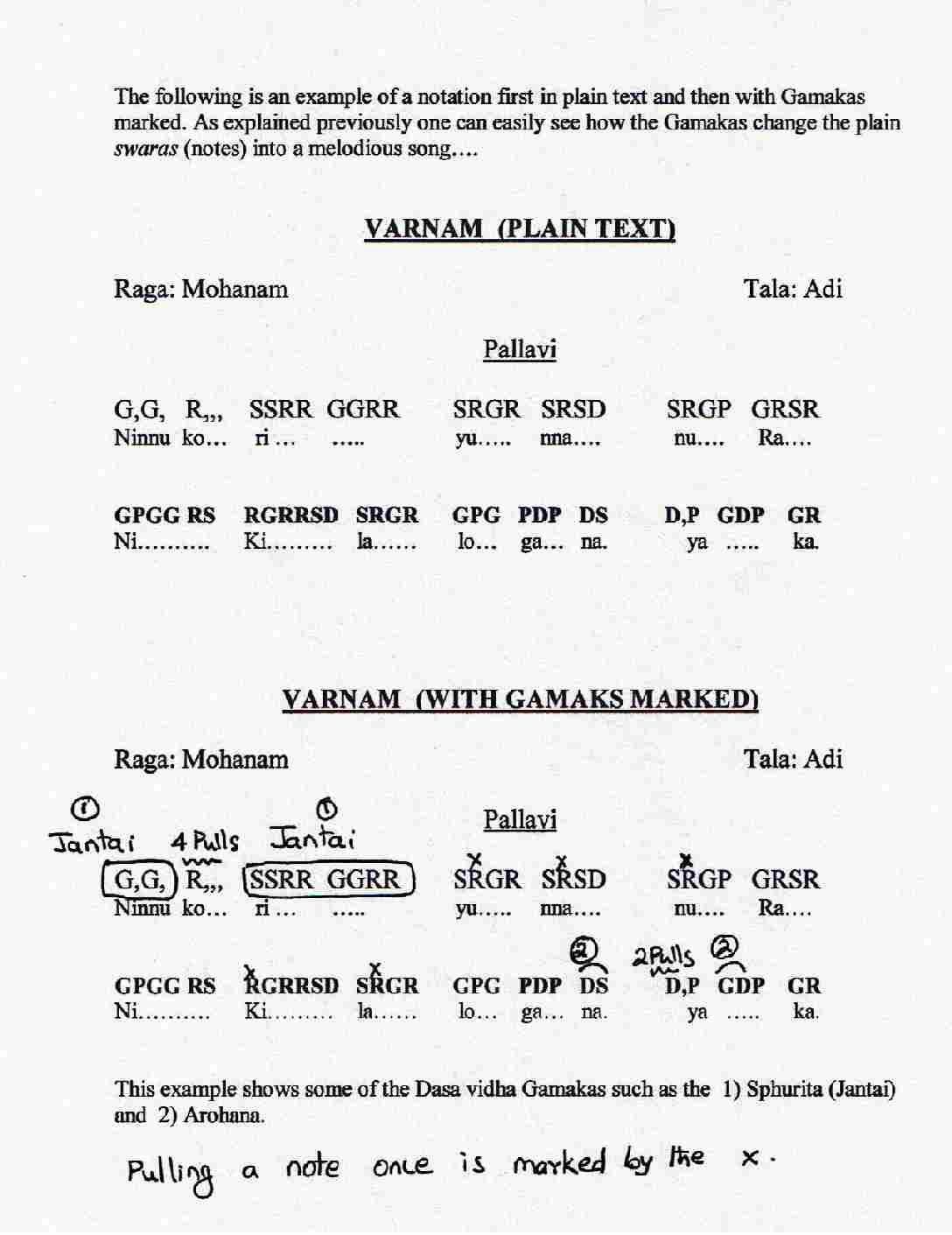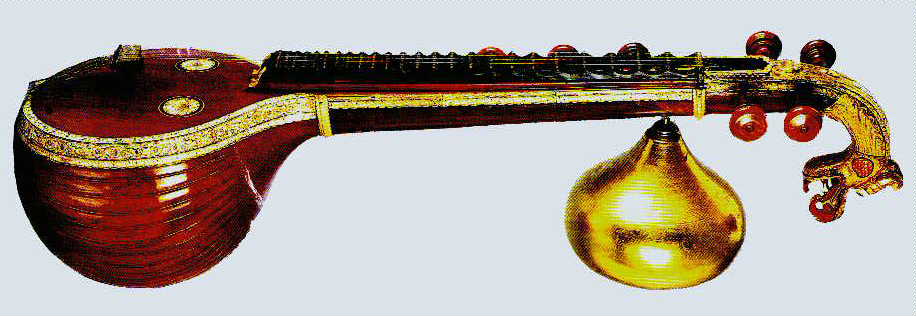Contribute
| South Asian Art History - In Memory Of Prashant H. Fadia |
Durga Krishnan
05/29/2007
There are supposed to be 7, 15, 17, 19 or 22 different Gamakas according to different sources. Pasvadeva’s Sangita Samaya Sara, Haripala’s Sangita Sudhakara, narada’s Sangita Makaranda and Venkatamakhi are to name a few. [1] South Indian Music, IV by Prof. P. Sambamoorthy, page 134. [1] South Indian Music, IV by Prof. P..Sambamoorthy, page 134.
“What is the one ingredient that gives taste to foodâ€, asked my now Guru, the violin legend and maestro Padmabushan Sri Lalgudi G. Jayaraman on my first day of lesson with him. Though I had an answer, I simply looked at him without saying a word. “Tell me, what gives taste to the food we eat?†repeated the maestro. Still, not wanting to tell him what I thought of as an answer, I said, “I don’t know. Would you please tell me what it is?†“Saltâ€, he said, “Salt gives the desired taste to almost all the food we eat. But just because salt gives the taste, can we keep adding salt, hoping it will increase the taste? Of course not and if we do that it will then ruin the taste of the food and will make it inedible. Gamakams to our music is just like salt to our food. We need gamakams to make the music beautiful and full of expression, but too much gamakam will ruin the music. It has to be used in a carefully measured amountâ€. What an unforgettable lesson I learned from the legend that day! What a simple yet effective way of explaining the most important aspect of our music, the GAMAKAS!
All of us, music lovers, have heard the word GAMAKAM. But what is Gamakam? Simply put, it is the ornamentation we do to the notes (swaras) that brings out the melodic character of the raga (scale) and expression (bhava) to our music. It is the back- bone of our music system. Two ragas with identical ascending and descending scale and born out of the same parent raga might have totally different character and expression because of the Gamakas. It is the manipulation of a note in different manners such as pulling, sliding etc. Whatever it might be, it is extremely rare in Indian music to hear a raga or song done using plain notes. The students are taught with Gamakas from the very beginning, even while they are learning the initial exercises in the Mayamalavagaula raga as it is our tradition, they are taught to sing the second note Ri and the sixth note Dha with gamaka. Bharatha in his Natya Sastra compares music without Gamaka to night without moon, a river without water, a plant without flowers and a woman without ornaments…
“Shashinaa rahitheva nishaa vijaleva nadhilathaa vipushyeva
avibhushitheva kaantha geethiralankaaraheenaa syaathâ€
Gamakas give life to the music and make a simple “pdn, p,,,m, g……†in to “Brova Baaramaa†and that is precisely why it is impossible to learn Indian music just by the notation itself without the help of a Guru (teacher). It is also important to listen to a lot of music to understand the nuances that the Gamakas bring to our music.
There are some Gamakas specifically designed for vocal music and others just for instrumental music. In graceful gamakas, a fine web of microtonal variations is woven.1
These microtones that we hear are called grace notes (anuswaras). These are the notes that are heard because of the Gamakas but not seen in the notation itself. It will be very difficult and confusing to include all these grace notes in the notation of a composition. Parsvadeva, in his Sangita Samaya Sara defines gamaka in the following terms..â€When a note produces the color of srutis other than those which are its own, it is known as Gamaka.â€2
But a system of Ten Gamakas (Dasa vidha Gamakas) was later developed and widely accepted by everyone even today. They are as follows…
1. Arohana - Gamaka embracing notes in the ascending order.
2. Avarohana - Gamaka embracing notes in the descending order
3. Dhaalu - Starting on a basic note and producing the higher notes according to the grammar of the particular raga.
4. Sphurita - Janta swara phrase wherein the lower note in between each janta swara group is faintly heard and the second note is stressed.
5. Kampita - Oscillating the particular note ever so slightly, that the adjacent notes are not heard even slightly.
6. Ahata - Gamaka done in groups, for an example sr rg gm mp pd…
7. Pratyahata - Same as Ahata but only in descending pattern, for an example sn nd dp pm…
8. Tripuscha - Swaras done in triplets, for an example sss rrr ggg mmm…
9. Andola - Swaras done in the following manner – srs Dd, sra Pa, srs Mm…
10. Murchhana - Starting from Shadja and ending on Nishadha and then starting from Rishabha and ending in high Shadja etc.
The famous Bhairavi ata tala varnam “Viriboni†contains all of the above dasa vidha Gamakas. The Gamakas are common for both vocal and instrumental music. But there are still many subtle Gamakas with special characteristics for vocal and instrumental music that are not covered by these ten Gamakas. The veena is the only instrument in which all the ten Gamakas can be produced with perfection.
Durga Krishnan, is a well known Veena teacher. Her website is replete with information about Carnatic music . www.nescm.com
You may also access this article through our web-site http://www.lokvani.com/

